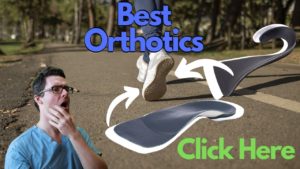Ball of the Foot Pain
Morton’s Neuroma Surgery Recovery Time [Best Home Treatment]
Morton’s neuroma surgery recovery time can include 2-4 weeks in a dressing and surgical shoe. The recovery time may be longer, learn to make it FASTER!
Look:
- Morton’s neuroma pain can be improved with a few simple treatment changes.
- We are foot doctors & we see this problem get better almost every day.
- The goal is to solve this problem without medication or surgery if at all possible.
So, let’s GO!
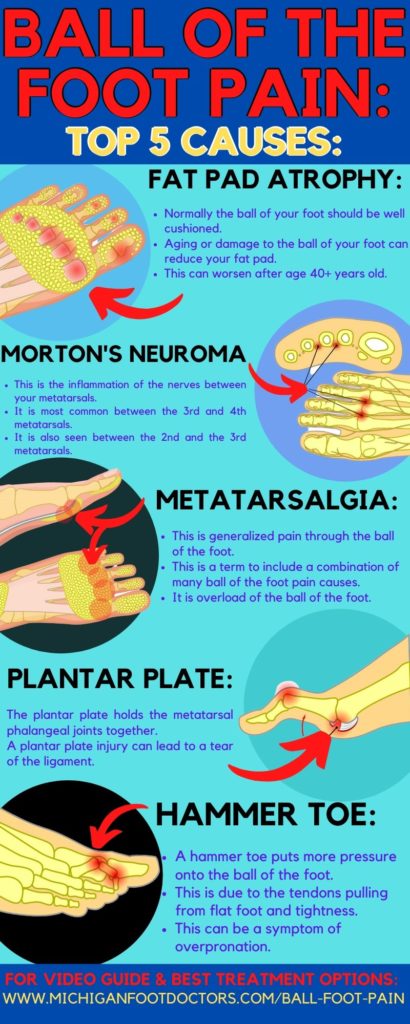
Table of Contents
Ball of the Foot Pain Pictures & Photo Gallery:
Look:
- Metatarsalgia: which means generalized foot pain without a specific cause.
- Second toe capsulitis: this is the inflammation of the second toe joint capsule.
- Capsulitis is related to hammertoe formation, and can lead to a plantar plate tear. There is some overlap between these three disorders. As they get worse tearing and ligament damage can occur.
- Morton’s neuroma: this is the damage and inflammation to the nerves between and underneath the metatarsal joints.
- Fat pad atrophy of the ball of the foot: this is the loss of cushioning in the ball the foot.
- Plantar Plate Tear: A plantar plate tear is ripping of the ligaments holding the toe together.
So, click on the photo gallery to see the specific causes of your ball of the foot pain!
Click on the photo gallery to see the specific causes of your ball of the foot pain!
Morton Neuroma Recovery Time Overview:
- Recovery for Morton Neuroma surgery is relatively quick.
- Usually, Morton Neuroma surgery patients are in a surgical shoe for 2-4 weeks depending on how well healing is going.
- Returning to a regular shoe after surgery in 2-6 weeks is typical.
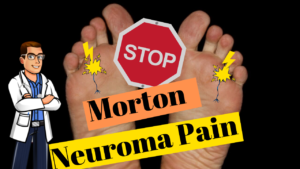
What is a Morton Neuroma?
- A Morton’s Neuroma is swelling in between the toes in the nerve area, causing severe pain.
- This is a compression injury to the nerve.
- Technically this is not a neuroma unless there is an injury with scar tissue.
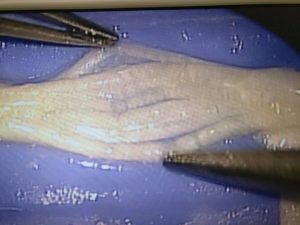
Morton’s Neuroma Causes:
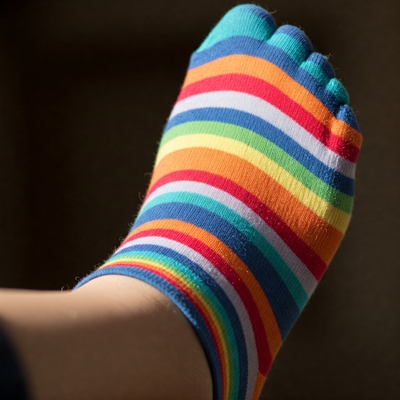 This is most commonly caused by too much pressure in the ball of the foot.
This is most commonly caused by too much pressure in the ball of the foot.- The nerve between the 3rd and 4th metatarsals does swell to cause extensive pain.
- This leads to bruising and compression pain to the nerve.
- This can last many months even if the pressure is relieved.
- In severe cases this can cause permanent nerve damage.
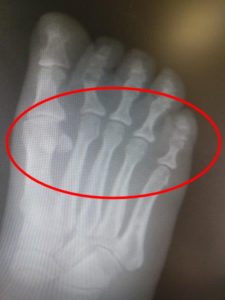
This is most common in people who have very tight hamstrings calf muscles are putting much more pressure on the ball the foot. This can lead to neuroma, metatarsal or even stress fracture pain.
Morton Neuroma Risk Factors:
The most common cause for a Morton’s Neuroma is improper foot wear. That being said, there are many more reasons to develop a Neuroma. Constant pressure or repetitive activity to the bottom of your foot can create Neuroma. Tight shoes such as high heels or dress shoes create a lot of pressure to the ball of your foot and can cause a neuroma. Other conditions such as Bunion’s, hammer toes and narrow fat pad to the ball of the foot can cause also cause unwanted pressure creating a Morton’s Neuroma.
- Improper foot wear (high heels, limited arch support)
- Constant pressure
- Repetitive activity (running, standing, etc.)
- Bunions
- Hammer toes
- Narrow fat pad
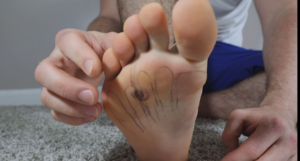
Morton’s Neuroma Symptoms:
Patients with Morton Neuroma’s develop pain on the bottom of their foot near the toes. Pain ranges from a mild pain to very painful, depending on the severity. The most common complaint patients have would be “it feels like I am walking on a rock.” Walking bare foot can be extremely painful with a Neuroma. Although Morton Neuroma’s are most common between the third and fourth toe the can occur any where at the base of the toes.
- Pain on bottom of foot near the toes
- The feeling of walking on a rock
- Extreme pain while barefoot
When to seek treatment:
- Pain in the ball of the foot is the number one reason to seek out treatment for a Morton’s Neuroma.
- The pain can hinder day to day activities such as walking and exercise.
- If you notice any change in your foot, it is best to have it examined.
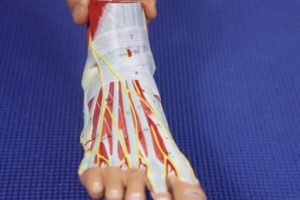
Morton’s Neuroma Home Treatment:
There are many ways to help treat Morton’s Neuroma depending on the severity. For less chronic conditions you could get new shoes with better arch support, wider toe box and more padding. Losing weight or changing exercises can dramatically help pain caused by Morton’s Neuroma. If these do not help there are more steps that can be made to improve the situation. Doctors at Advanced Foot and Ankle can prescribe anti inflammatory medications or custom orthotics for your shoes. Injections can also be given to help reduce the swelling caused from a Neuroma. If the issue still stands, surgery would be the final option.
- New shoes with arch support
- Weight loss
- Adding variety to exercises
- Anti-inflammatory medication
- Custom orthotics
- Injections
- Surgery
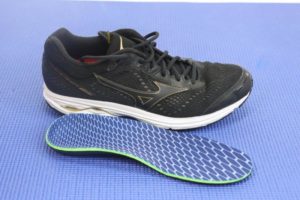
Morton’s Neuroma Surgery:
- Podiatrists and some Orthopedic surgeons are able to surgically excise the nerve in your foot.
- Consider this only if conservative therapy has failed.
- This is the technique for Morton’s neuroma surgery:
- We find people have great success with shoes, orthotics and injections.
Morton’s Neuroma Recovery Time:
- Recovery for Morton Neuroma surgery is relatively quick.
- Surgery takes less than 1 hour in most cases and can be done at an outpatient level.
- This is performed under local anesthesia with monitored local anesthetic care.
- Usually, Morton Neuroma surgery patients are in a surgical shoe for 2-4 weeks depending on how well healing is going.
- Returning to a regular shoe after surgery in 2-6 weeks is typical.
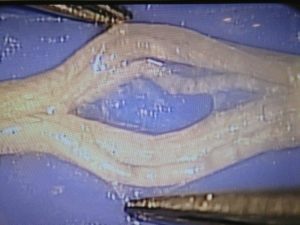
Ball of the Foot Pain Treatment Infographic:
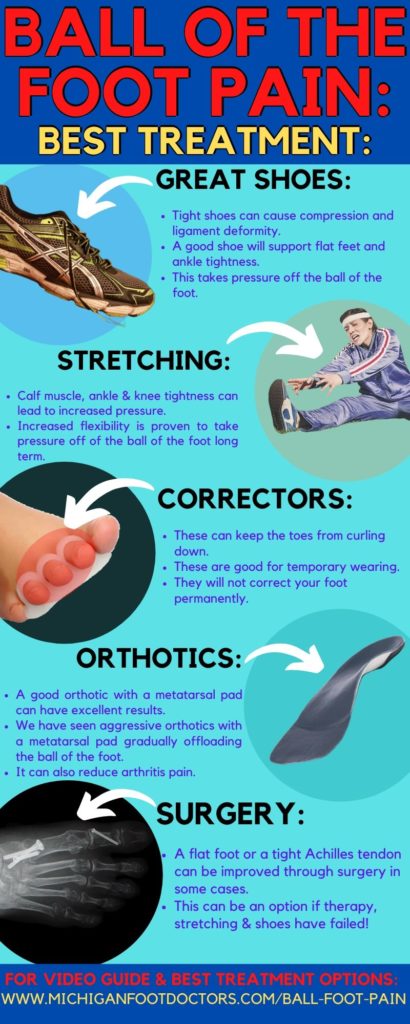
Ball of the Foot Home Treatment:
- Consider taping, orthotics, and great shoes as a combination to fix your foot problem.
- Products are not always necessary to fix your problem.
- The key is correcting the biomechanical problems that are leading to forefoot overload.
- Foot overload means too much pressure in the ball of the foot.
- Generally, something called ankle joint equinus can lead to too much pressure in the ball of your foot. This means your ankle is not flexible enough to move up and down.
- Ball of the foot pain treatment consists of two phases, first is control inflammation, next is to control bio-mechanics.
Remove Control Inflammation:
Massage & Ice Products:
- The metal ball is one of my personal favorites.
- This works great for your arch, less for the ball of the foot.
- These can help relax the arch or heel ligaments, leading to less pressure in the ball of the foot.
- Pills, creams, and ice will never completely fix your problem alone. What they will do is reduce the pressure on the area.






Menthol Based Gels:
- Biofreeze is one of our favorites.
- These gels have been studied to work 2x as long as ice.
- This works great for the ball of the foot.
- Consider using these as options when resting on the couch or going to sleep at night.








Massage Sticks:
- These can work great for loosening your muscles.
- This is means for your hamstring and calf muscles. This can loosen the ankle tightness, putting pressure on the ball of your foot.
- This allows less tightness and pressure on the ball of your foot.






Ball of the Foot Stress Relief.
- The key is to prevent future pain.
- If you can get rid of the pain and swelling, this will let you start walking normally.
- If you can walk normally, the vast majority of your pain should gradually start to go away.
- This means proper cushion, proper stability, and pressure relief from the front of your foot.
- This will relieve pressure from your big toe, your 2nd toe, your Morton’s neuroma, your plantar plate, hammertoes and joint capsules.
Best Metatarsalgia Shoes:
- Getting a great supportive pair of shoes will make sure that there is pressure removed from the ball of your foot.
- This is especially important if you have metatarsalgia, Morton’s neuroma, 2nd metatarsal overload syndrome, and capsulitis!
- Consider shoes combined with a good supportive orthotic for the best pain relief!
- The following link will show you what our favorites are.
Best Ball of the Foot Insoles:
- These are our recommended orthotics & insoles.
- There are different types of different shoes.
- Women’s shoes usually need a less bulky orthotic but allow for less correction.
- A full-length orthotic requires a running shoe, boot, or comfortable walking/dress shoe.
Best Full-Length Orthotics:
- Full-length orthotics are the most recommended type for the ball of the foot pain.
- Be aware that if they are too uncomfortable, it might be worth starting with a less corrective pair.
- Eventually, you can then work your way up to these.








Best Dress Shoe Orthotics:
- These are a stronger option for shoes with tight dress shoes.
- Just be aware that less corrective orthotics & tight shoes are usually not a good combination.






Best 3/4 Length Orthotics:
- These may be a good option for the ball of the foot if the full-length orthotics are too tight or too uncomfortable.


Get A Great Dynamic Stretch:
- It is possible to stretch on your own, but these products can also really help!
- Personally, I have the stationary block set up in my kitchen to stretch every day multiple times while getting my coffee!
- This will take pressure off of the ball of your foot.








Ball of the Foot Pain

 Compare Prices:
Compare Prices: